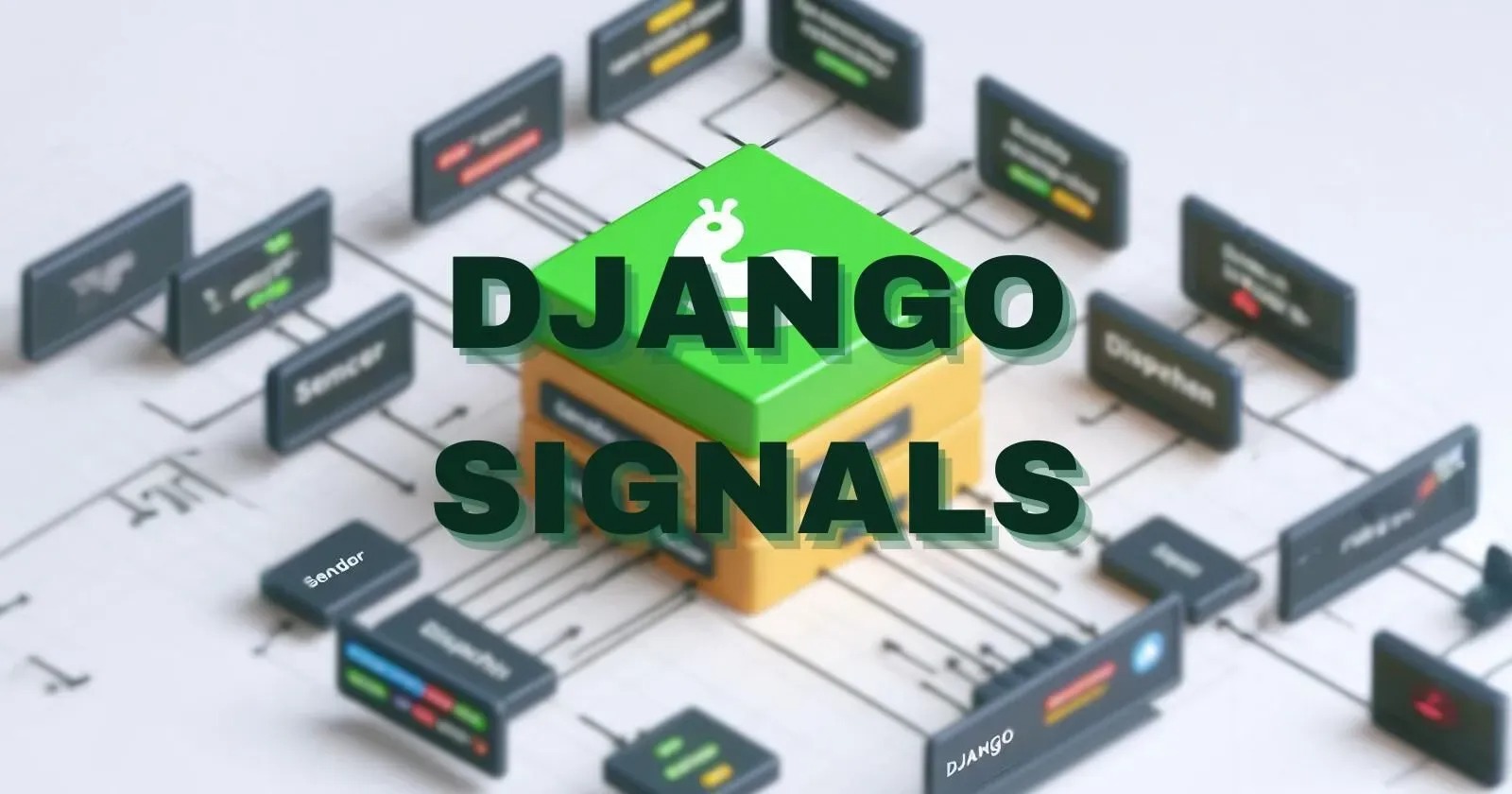Django Signals: Surface Overview
 Nischal lamichhane
Nischal lamichhane
In the dynamic world of web development, Django stands out as a powerful framework for crafting robust and scalable web applications. Among its many features, Django Signals emerge as a hidden gem, offering developers a mechanism to decouple various components of their applications and enhance interactivity. In this blog post, we'll delve into the realm of Django Signals, exploring what they are, how they work, and how you can leverage them to streamline your Django projects.
Learn Python & Django at django-tutorial.dev
Understanding Django Signals
At its core, Django Signals provide a means for components within a Django application to communicate with each other in a decoupled manner. Inspired by the Observer design pattern, signals enable certain senders to notify a set of receivers when a particular action or event occurs.
Anatomy of Django Signals
Django Signals rely on the signal module, which allows developers to define custom signals and connect them to specific functions or methods. Let's break down the key components:
Signal Definition: Developers can define custom signals using the
django.dispatch.Signalclass. These signals serve as a communication mechanism, signaling when a particular event occurs. There are several Built-in signals in Django. Read about them here.Signal Sender: When a specific action or event occurs within the application, the sender triggers the corresponding signal by calling the
send()method. The sender can include additional data as arguments when sending the signal.Signal Receiver: Receivers are functions or methods that are registered to respond to a particular signal. Developers can connect multiple receivers to a signal, enabling modular and extensible application behavior.
Practical Applications of Django Signals
Now that we understand the basics, let's explore some real-world scenarios where Django Signals can be invaluable:
Pre-Save and Post-Save Hooks: Utilize signals such as
pre_saveandpost_saveto perform actions before or after saving an object to the database. For example, you can automatically update related records, send notifications, or trigger additional processes based on changes to certain models.User Authentication and Authorization: Implement custom signals to integrate with Django's authentication system. For instance, you can execute custom logic when a user is created, updated, or deleted, enhancing security and access control within your application.
Cache Invalidation: Maintain data consistency by employing signals to invalidate cache entries when relevant data is modified. This ensures that cached data remains synchronized with the underlying database, preventing stale or outdated information from being served to users.
Best Practices and Considerations
While Django Signals offer immense flexibility and functionality, it's essential to adhere to best practices to avoid common pitfalls:
Keep Signals Simple: Resist the temptation to overcomplicate your signal handling logic. Aim for simplicity and clarity to maintain code readability and ease of maintenance.
Avoid Tight Coupling: Strive to keep your application components loosely coupled by utilizing signals judiciously. Over-reliance on signals can lead to spaghetti code and make your application harder to understand and maintain.
Unit Testing: Test your signal handlers thoroughly to ensure they behave as expected under various scenarios. Mocking signals and receivers can facilitate isolated testing of individual components.
Real World Application : Simplified Communication
Django Signals enable components within an application to interact without tight coupling. Key components include signal definition, sender, and receiver.
Signal Definition: Custom signals are defined using
django.dispatch.Signal, serving as communication channels for specific events.Signal Sender: Sends signals using the
send()method when relevant events occur, including optional data arguments.Signal Receiver: Functions or methods connected to signals respond to specific events, allowing modular and extensible behavior.
Demo App: Notifications with Django Signals
Let's create a demo app illustrating Django Signals in action. We'll build a simple notification system where users receive a welcome message upon registration.
Signal Definition: Define a custom signal
user_registered.Signal Sender: Trigger
user_registeredsignal upon user registration, sending user data as arguments.Signal Receiver: Connect a receiver to
user_registeredsignal to send a welcome message to the user.
Code Demo:
# signals.py
from django.dispatch import Signal
user_registered = Signal(providing_args=["user"])
# receivers.py
from django.dispatch import receiver
from .signals import user_registered
@receiver(user_registered)
def send_welcome_message(sender, **kwargs):
user = kwargs['user']
# Send welcome message logic here
send_user_mail(user.email,user.username,message = "Welcome to Silk Road")
send_user_mail will be a explicitly defined function that sends mail to the user with an activation link, welcome message or anything in between. Read About how to send mail from your django app here:
# models.py
from django.db import models
from .signals import user_registered
class User(models.Model):
username = models.CharField(max_length=100)
email = models.EmailField()
def create_user_profile(sender, instance, created, **kwargs):
if created:
user_registered.send(sender=User, user=instance)
models.signals.post_save.connect(create_user_profile, sender=User)
Conclusion
Django Signals offer a concise and powerful mechanism for inter-component communication in Django applications. By understanding and harnessing their potential, developers can enhance modularity, extensibility, and maintainability. Explore Django Signals further to streamline your application's communication and unlock new possibilities. Happy coding!
Subscribe to my newsletter
Read articles from Nischal lamichhane directly inside your inbox. Subscribe to the newsletter, and don't miss out.
Written by

Nischal lamichhane
Nischal lamichhane
There are always 2 ways to do something in Django. They are Django Master's WAY WRONG WAY